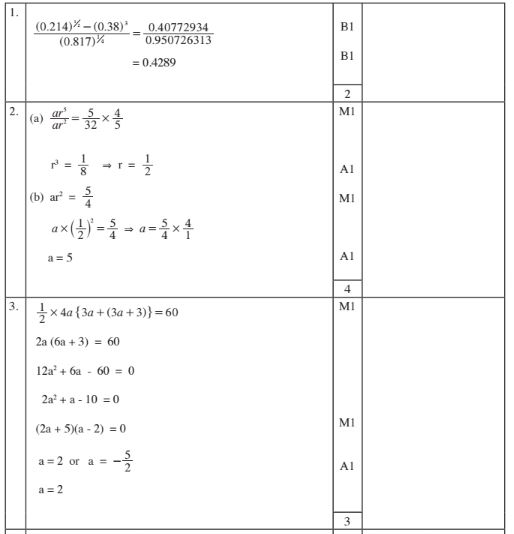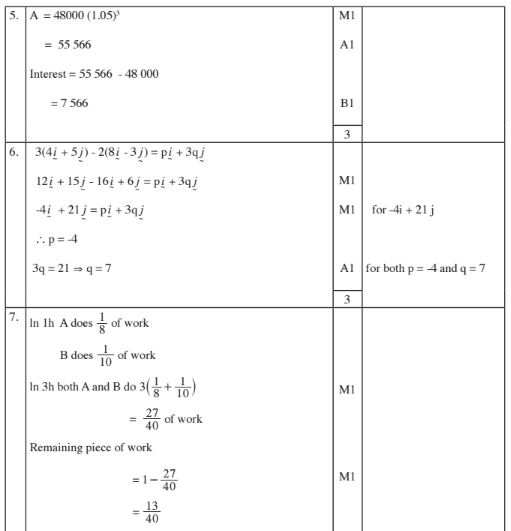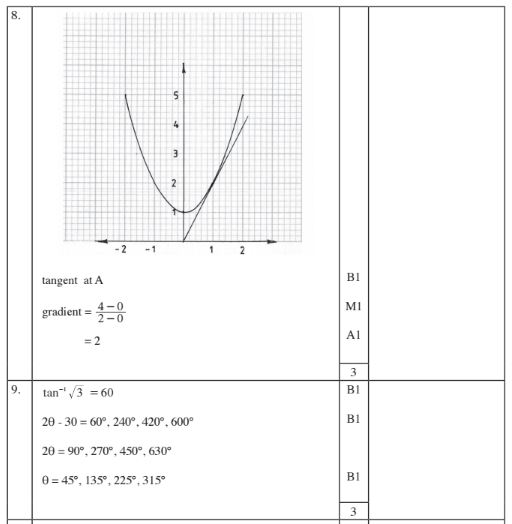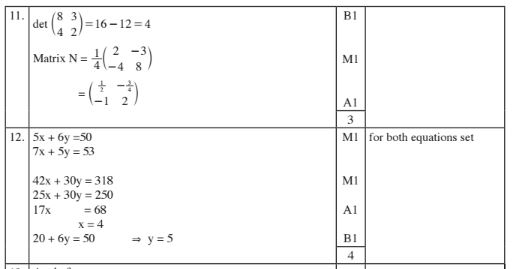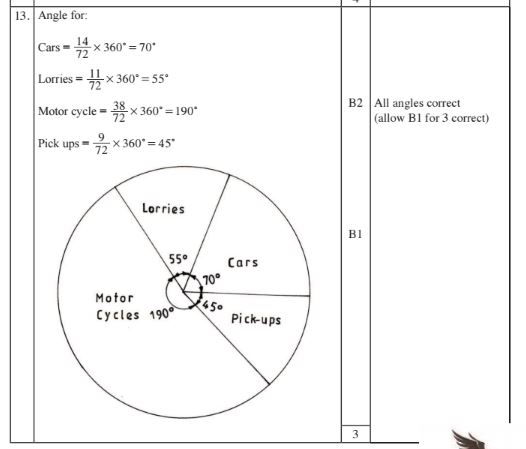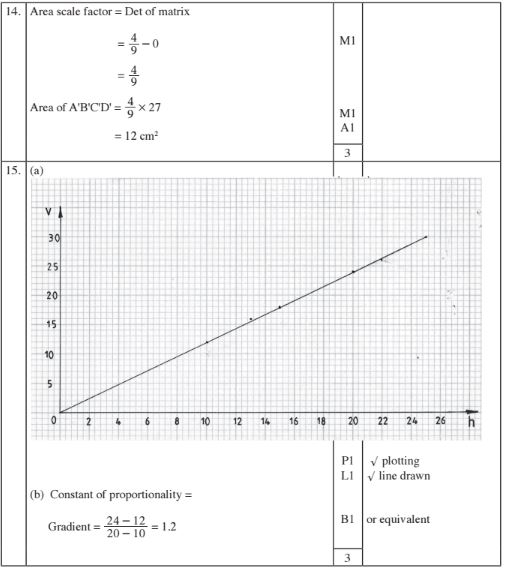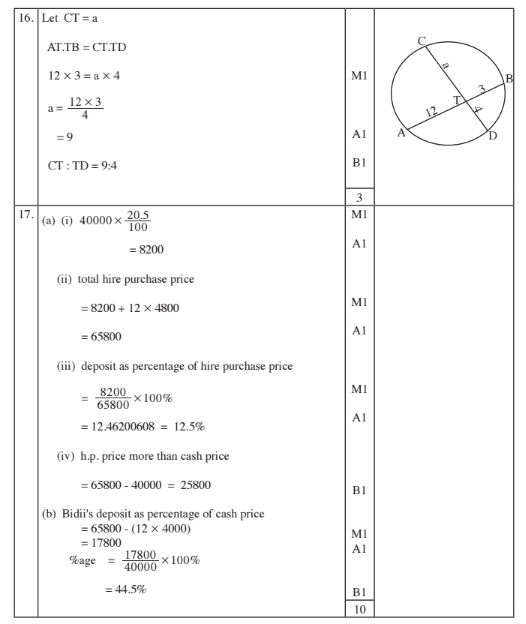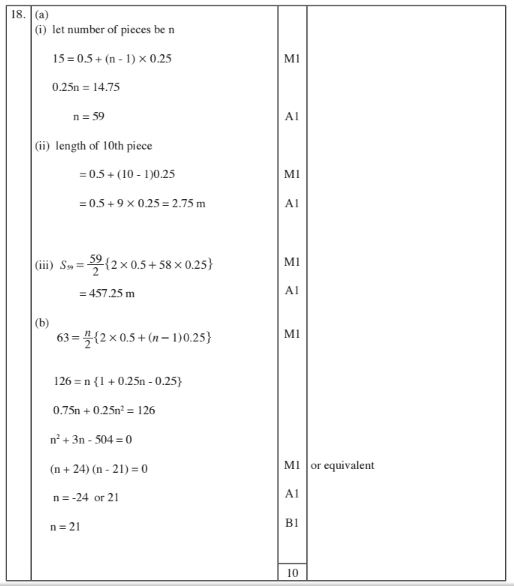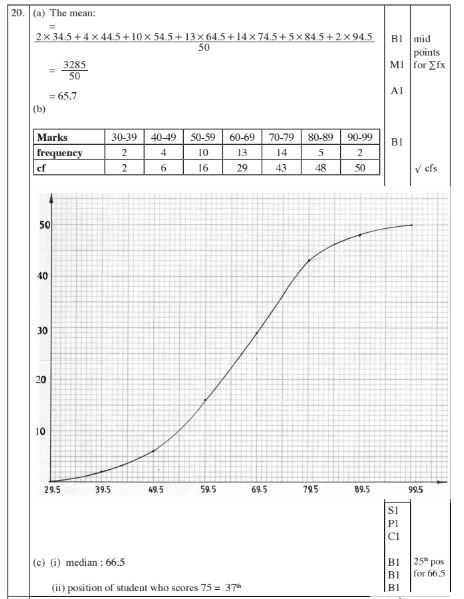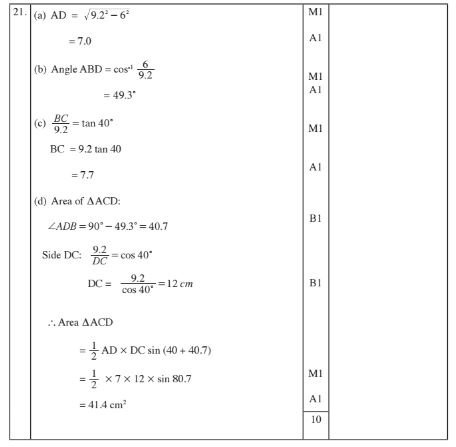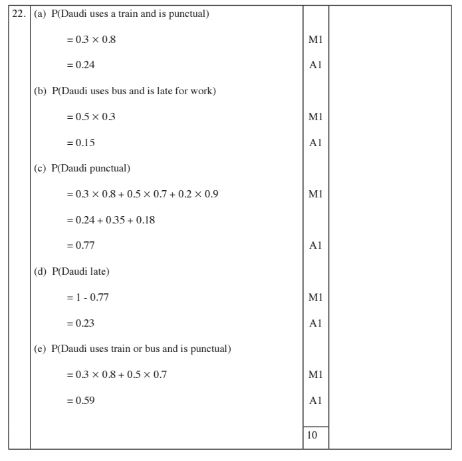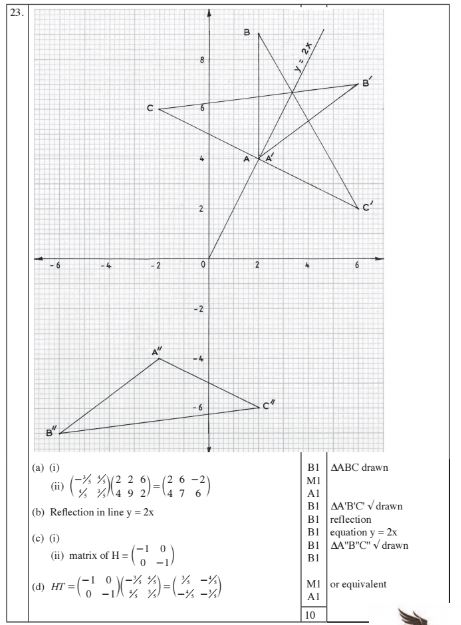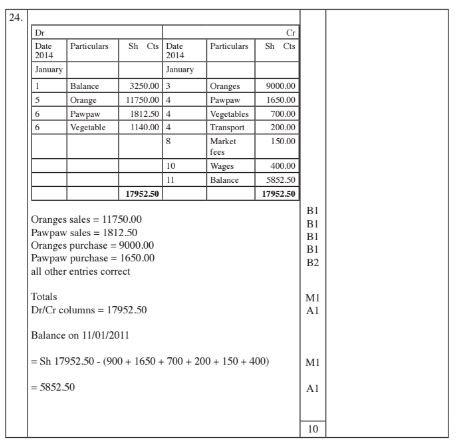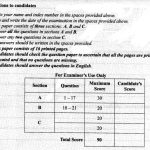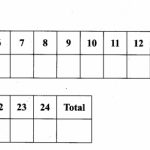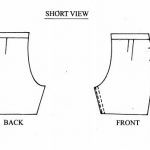KNEC KCSE Past Papers Maths B 2014
KCSE Past Papers Maths B 2014
Section I (50 marks)
Answer all the questions in this section in the spaces provided.(2 marks)
1. Evaluate
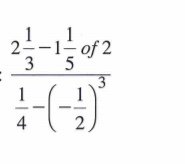
2 During a prize-giving day in a school, there were four times as many students as parents. The number of girls was 84 more than the number of boys.
if there were 630 girls, calculate the number of parents present. (3 marks)
3 Given that 3x + 5y = 300 and x + y = 78, find the value of l0x + 15y. (3 marks)
4 A group of families shared 96 packets of maize meal, 84 packets of Wheat flour and 36 packets of sugar.
Determine:
(a) the greatest number of families that shared the foodstuffs equally; (2 marks)
(b) the total number of packets of foodstuffs that each family received. (2 marks)
5. Express 128/22÷ 28 in the simplest index form. (3 marks)
6. Line AB shown below is a side of a parallelogram ABCD in which AD I 6 cm and angle DAB = 30°.
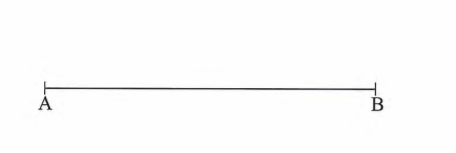
Using a pair of compasses and ruler only, complete the parallelogram ABCD. (3 marks)
7. An acute angle or is such that sin(4or)° = cos(o¢+ 10)°. F ind: (a) the value of oz; (2 marks)
(b) sin or, correct to 3 decimal places. (l mark)
8. Without using a calculator or mathematical tables, evaluate:(3 marks)
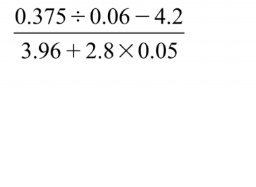
9. Three children Awino, Buko and Chebet had two types of fruits each. Awino had twice as many mangoes as Buko while Buko had three times as many mangoes as Chebet.
Also Buko had three times as many oranges as Awino while Chebet had twice as many oranges as Awino.
If Buko had x mangoes and y oranges, write a simplified expression to represent the total number of fruits the three children had. (3 marks)
10. A solid has a circular cross—section of radius l.4 cm and a height of 4 cm.
(a) Name the solid. (l mark)
(b) Draw an accurate net of the solid. (2 marks)
11. The tip of the minute hand of a clock moves through a distance of l7.6 cm between 3.00 pm and 3.12 pm. Find the length of the minute hand. (4 marks)
12. ln the figure below, O is the centre of the circle. PQRS is a cyclic quadrilateral and RST is a straight line. Angle RPQ I 21° and angle TSP — l47°.
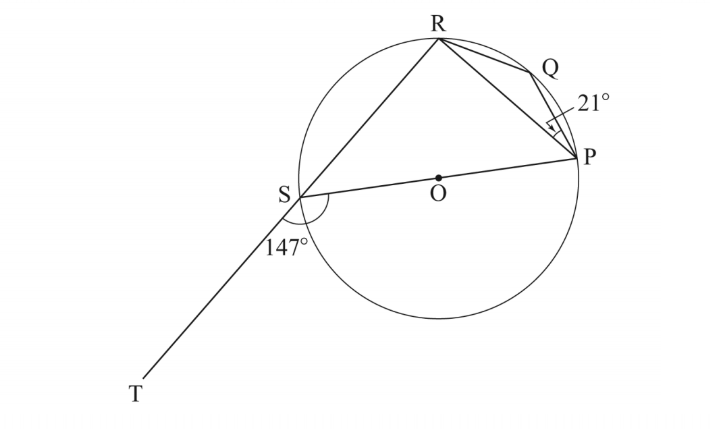
Calculate the size of angle SRQ. (3 marks)
13. Factorise 2x2 + 6y — 3x — 4xy. (2 marks)
14. The area of a rhombus is 34 cm2. One ofthe interior angles is 30°. Calculate the length of a side of the rhombus to the nearest centimetre. (3 marks)
15. The vertices of a triangle are P(-3,1), Q(1,3) and R(4,2). The vertices of its image under an enlargement are P'( —7,4), Q'(1,8) and R'(7,6).
(a) On the grid provided, draw triangle PQR and its image. (2 marks)

Section II (50 marks)
Answer any five questions from this section in the spaces provided.
17 Keya, Limo and Mumo invested some money into a business. Keya contributed Ksh 30 000, Limo contributed Ksh 50 000 and Mumo contributed 25% of the total amount contributed by Keya and Limo.
(a) Calculate:
(i) the amount of money contributed by Mumo; (2 marks)
(ii) the ratio in which Keya, Limo and Mumo made their contribution. (2 marks)
(b) After one year, the business realised a profit of Ksh 25 000 which was shared by the partners in the ratio of their contributions. Find the amount of money Mumo got. (2 marks)
(c) During the second year, Mumo added some more money to the business. The new ratio oftheir contributions was, Keya:Limo:Mumo I 3:517.
Calculate:
(i) the total amount of money Mumo added to the business in the second year. (2 marks)
(ii) Mumo’s percentage contribution in the business by the end of the second year. (2 marks)
18 The capacity of a cylindrical container is 1.54 litres. The height of the container is 10 cm. (Take π = 22/7)
(a) Calculate the diameter of the container. (3 marks)
(b) Along each end of the curved surface, a ribbon of width 1.5 cm is fixed with an overlap of 2 cm.
Calculate:
(i) the total length of the ribbon used; (3 marks)
(ii) the surface area of the part of container covered by the ribbon. (l mark)
(c) Given that the container is open at one end, calculate the outer surface area of the container. (3 marks)
19 Figure ABCD below is a scale drawing of a piece of land in which AD represents 90 m. The square PQRS represents the homestead.
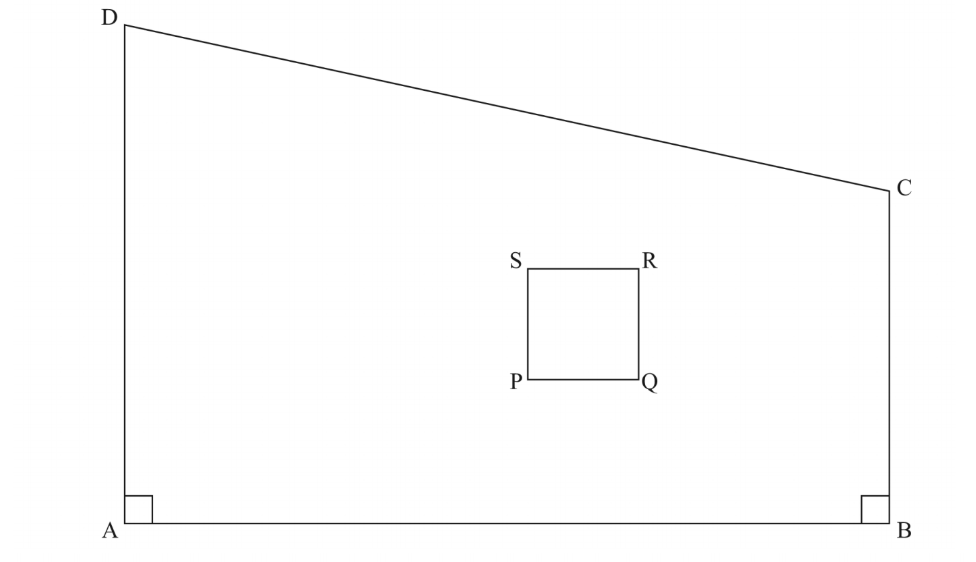
(a) State, in ratio form, the scale used. (2 marks)
(b) Calculate:
(i) the perimeter of the homestead in metres. (2 marks)
(ii) the area of the piece of land in hectares. (3 marks)
(c) On the scale drawing show the shortest distance from the centre of the homestead to side CD and hence determine the distance in metres. (3 marks)
20. A line L1 passes through points (—3, —2) and (6, 1).
(a) Find the equation 0f L1 in the fonn y = mx + c, where m and c are constants. (3 marks)
(b) A line L2 is perpendicular to LI and passes through point (— 1, 2). Find the equation of L2
in the form ax + by + c I 0, where a, b and c are constants. (3 marks)
(c) Another line L3 is parallel to L2 and passes through point (1,1). Determine the co-ordinates of the x-intercept and the y-intercept of L3. (4 marks)
21 Using a ruler and a pair of compasses only:
(a) Construct triangle PQR such that PQ = 6.5 cm, QR = 8 cm, and angle PQR = 75°. (4 marks)
(b) On triangle PQR in part (a) above, construct:
(i) the perpendicular bisector of line RP to meet line RP at M and line RQ at N. (l mark)
(ii) the bisector of angle RPQ to meet line MN at O. Measure angle POM. (2 marks)
(iii) a circle centre O and radius OM, to meet line RQ at X and Y. Measure chord XY and angle XOY. (3 marks)
22 An athlete ran two laps around a 400 metre track. He ran the first lap in 64 seconds and then increased his speed in the second lap by 6%.
(a) Calculate his speed, in metres per second, during: (i) the first lap; (2 marks)
(ii) the second lap; (2 marks)
(b) Calculate, to Z decimal places:
(i) the total time taken to run the two laps; (3 marks)
(ii) the average speed, in km/h, for the two laps. (3 marks)
23 Kerubo bought 420 bananas at Ksh 20 for every 8 bananas. For every 70 bananas she bought, she was given one extra banana. She hired a cart for Ksh 50 to transport the bananas. During transportation l4 bananas got spoilt and the remaining ones were sold.
(a) Determine:
(i) the total amount of money that Kerubo spent; (2 marks)
(ii) the number of bananas sold. (l mark)
(b) Kerubo made a 60% profit after selling some of the bananas at Ksh 30 for every 5 and the rest at Ksh 10 for every 3.
Calculate:
(i) the number of bananas sold at Ksh 30 for every 5. (4 marks) (ii) the amount of money obtained from the bananas sold at Ksh 10 for every 3.
24 (a) (i) On the grid provided, draw triangle RST such that R(—3, 1), S(—3,—4) and T(2,—4). (l mark)
(ii) Determine the area of the triangle RST. (2 marks)
(b) On the same grid:
(i) plot point U such that RSTU is a square. State the coordinates of point U; (2 marks)
(ii) plot point V such that SV I ZSU and S, U and V lie on a straight line. State the coordinates of V. (2 marks)
(0) Calculate the area of RSTV. (3 marks)
3.3.4 Mathematics Alt. B Paper 2 (122/2)
Section I (50 marks)
Answer all the questions in this section in the spaces provided.
1 Use a calculator to evaluate

giving the answer correct to 4 significant figures. (0.817)? (2 marks)
2 The third term of a geometric progression is 1% and the sixth term is 352 . Determine: (a) the common ratio; (2 marks)
(b) the first term. (2 marks)
3 The lengths of the parallel sides of a trapezium are (3a + 3) cm and 3a cm. The perpendicular distance between the parallel sides is 4a cm. If the area of the trapezium is 6Ocm, find the value of a. (3 marks)
4 The figure below shows a region enclosed by a curve drawn on a 1 cm square grid.
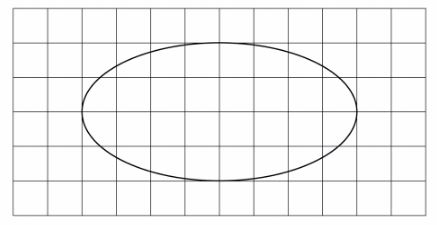
Estimate the area of the region in square centimetres.(3 marks)
5 Makena deposited Ksh 48 000 in a fixed account in a bank. The bank paid a compound interest at a rate of 5% p.a. Calculate the interest earned at the end of 3 years. (3 marks)
6 Three vectors are such that a = 4i + Sj, b = 8i — 3j and c = pi + 3qj, where p and q are scalars. Given that 3a — 2b = c, determine the values of p and q. (3 marks)
7 Machine A can complete some work in 8 hours while machine B can complete the same work in 10 hours. The two machines were set to do the work at the same time. After 3 hours, machine B broke down. Determine the time taken by machine A to complete the remaining piece of work. (4 marks)
8 The figure below shows a curve which passes through point A(l,2).
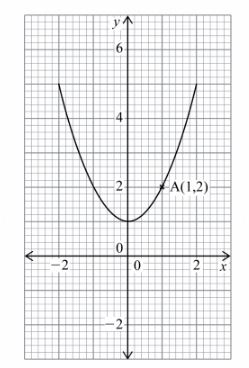
Determine the instantaneous rate of change at A. (3 marks)
9 Solve the equation, imageeeeeee. (3 marks)
10 Two points, S and T are on the surface of the earth. The position of S is (50° S, 138° E) and that of T is (22° N, 138° E). Determine the shortest distance on the surface of the earth between S and T. (Take radius of the earth to be 6370 km and rt = g) (3 marks)
11 Two matrices M and N are such that

, find N.
12 When Khisa walks for 5 hours at x km/h and Barongo walks for 6 hours at y km/h, they cover a total distance of 50 km. When Khisa walks for 7 hours at X km/h and Barongo walks for 5 hours at y km/h, they cover a total distance of 53 km. Determine the speeds x and y. (4 marks)
13 Four types of vehicles passed through a particular place on a road, on a certain day as shown in the table below.

Draw a pie-chart to represent the information. (3 marks)
14 The area of a parallelogram ABCD is 27 cmz. A’B’C’D’is the image of ABCD under a transformation matrix

(3 marks)
15 The volume, V cm3, of a liquid in a vertical tube varies as the height, h cm, of the tube. The table below shows values of h and the corresponding values of V.

(a) On the grid provided, draw the graph of V against h. (2 marks)
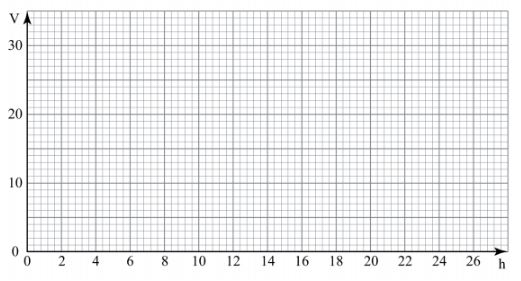
(b) Use the graph to find the constant of proportionality. (1 mark)
16 Two chords AB and CD of a circle intersect internally at T. AB = 15 cm, TB = 3 cm and TD = 4 cm. Find the ratio in which T divides CD. (3 marks)
SECTION II (50 marks)
Answer any five questions from this section in the spaces provided.
17 A shop offered goods on both cash and hire purchase terms. The cash price of a water pump in the shop was Ksh 40 000.
(a) Muiruri purchased the pump on hire purchase terms by paying a deposit equivalent to 20%% of the cash price followed by 12 equal monthly installments of Ksh 4800.
Calculate:
(i) the amount of deposit Muiruri paid; (2 marks)
(ii) the total hire purchase price; (2 marks)
(iii) the deposit as a percentage of the hire purchase price, correct to 1 decimal place; (2 marks)
(iv) the amount of the hire purchase price Muiruri paid above the cash price. (1 mark)
(b) Bidii purchased an identical water pump whose hire purchase price was the same as that paid by Muiruri. Bidii paid 12 equal installments of Ksh 4000. Calculate the deposit paid by Bidii as a percentage of the cash price. (3 marks)
18 A metal dealer cut a wire into pieces and arranged them in an ascending order of their lengths.
The shortest piece was 0.5 m and the longest was 15 m. The difference in length of successive pieces was 25 cm.
(a) Determine:
(i) the total number of pieces cut; (2 marks)
(ii) the length of the tenth piece. (2 marks)
(iii) the total length of all the pieces. (2 marks)
(b) Determine the number of pieces starting from the shortest, that will give a total length of 63 m. (4 marks)
19 (a) Complete the table below for the equation y = x2 + 3x — 5. (2 marks)

(b) (i) On the grid provided, draw the graph of y = x2 + 3x — 5 for —6 5 x S 3.
(Use 1 cm to represent 1 unit on the horizontal axis and 2 cm to represent 5 units on the vertical axis) (3 marks)
(11) From the graph, estimate the values of x when y = O. (2 marks)
(c) (i) On the same grid, draw the line y = Zx + 2. (1 mark)
(ii) From the graph determine the points of intersection of the curve y 1 x2 + 3x — 5 and the line y 1 2x + 2. (2 marks)
20 The table below shows marks scored by some students in a mathematics test.

(a) Calculate the mean mark. (3 marks)
(b) On the grid provided, draw an ogive to represent the information. (4 marks)
(c) Use the graph to determine:
(i) the median; (2 marks)
(ii) the position of the student who scored 75 marks. (1 mark)
21 The figure below is a quadrilateral ABCD. AB I 6 cm, BD I 9.2 cm and angle BDC = 40°.
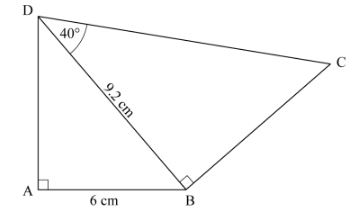
Calculate, correct to one decimal place:
(a) the length AD;(2 marks)
(b) the size of angle ABD;(2 marks)
(c) the length BC;(2 marks)
(d) the area of triangle ACD.(4 marks)
22 Daudi goes to work by means of either a train, a bus or a motorcycle. On any given day, the probability of using a train is 0.3, the probability of using a bus is 0.5 and the probability of using a motorcycle is 0.2. When he uses a train, the probability of being punctual is 0.8. When he uses a bus, the probability of being punctual is 0.7 and when he uses a motorcycle, the probability of being punctual is 0.9.
Calculate the probability that Daudi:
(a)uses a train and is punctual for work;(2 marks)
(b) uses a bus and is late for work;(2 marks)
(c) is punctual for work;(3 marks)
(d) is late for work;(1 mark)
(e) uses either a train or a bus and is punctual for work.(2 marks)
23 The vertices of a triangle ABC are A(2, 4), B(2, 9) and C(6, 2).
(a)On the grid provided:
(i) draw triangle ABC;
(ii) draw triangle A’B’C’, the image of triangle ABC under a transformation
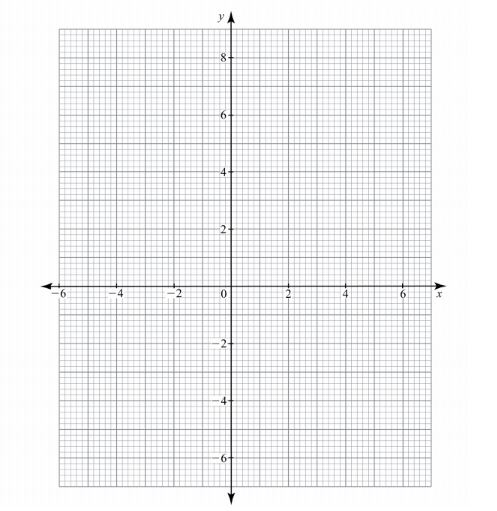
(b) Describe transformation T fully. (2 marks)
(c) The images of the vertices of triangle A’B’C’ under a transformation H are A”(—2,—4), B”(—6,—7) and c”(2,-6).
(i) On the same grid as in (a), draw triangle A”B”C”; (1 mark)
(ii) determine the matrix of transformation H. (1 mark)
(d) Find a single matrix of transformation that maps A”B”C” onto ABC. (2 marks)
24 A fruit vendor carried out the following transactions in January 2014. On January 1st, she had a cash balance of Ksh 3250. On January 3rd, she bought 1200 oranges at Ksh 90 for every 12. On January 4th, she bought 150 pawpaws at Ksh 11 each, vegetables for Ksh 700 and paid Ksh 200 for transport. On January 5th, she sold 1175 oranges at Ksh 10 each. On January 6th, she sold 145 pawpaws at Ksh 12.50 each and vegetables for Ksh 1140. On January 8th, she paid a market fee of Ksh 150. On January 10th, she paid Ksh 400 to her assistant as Wages. Prepare a single column cash account for the fruit vendor’s transactions and balance it as at 11th January 2014. (10 marks)
KCSE Past Papers Maths B 2014
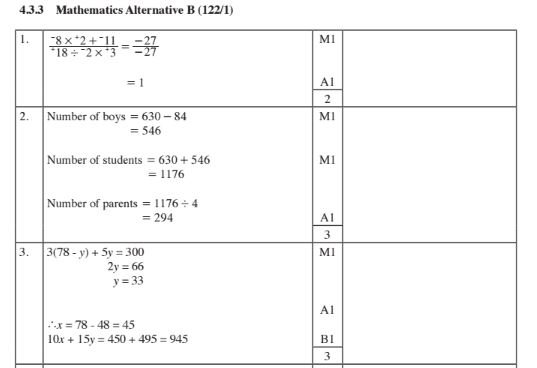
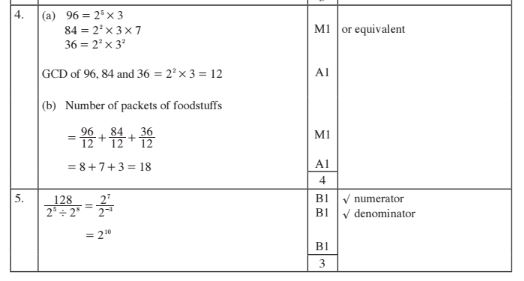
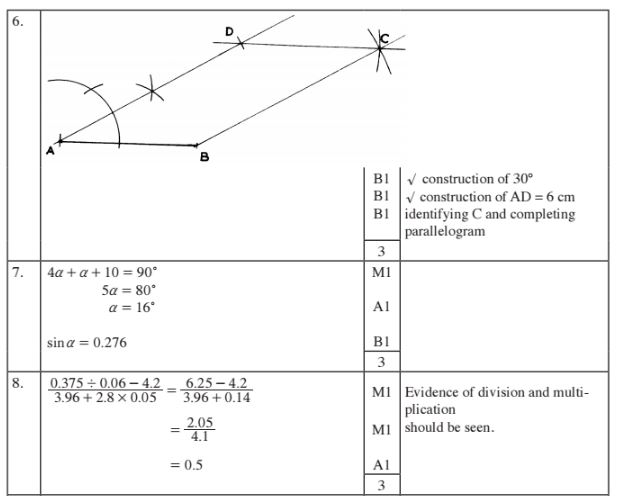

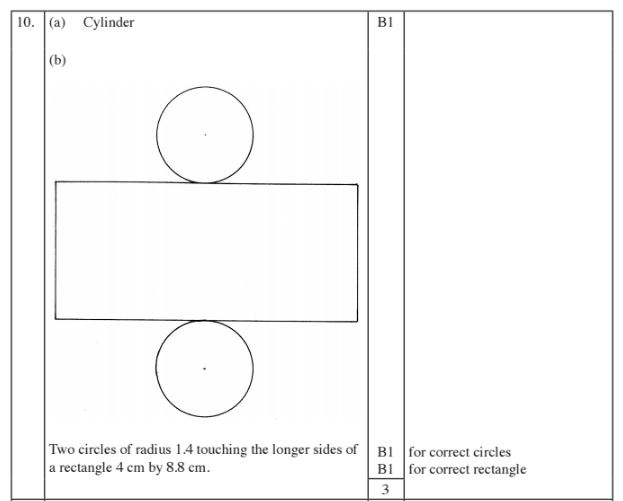
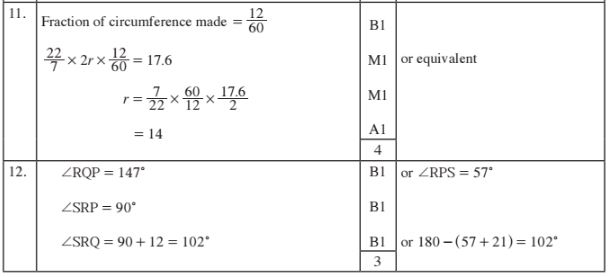
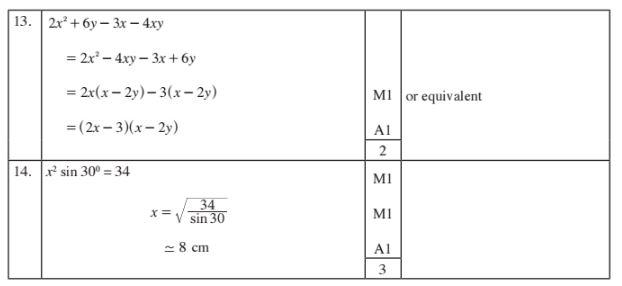
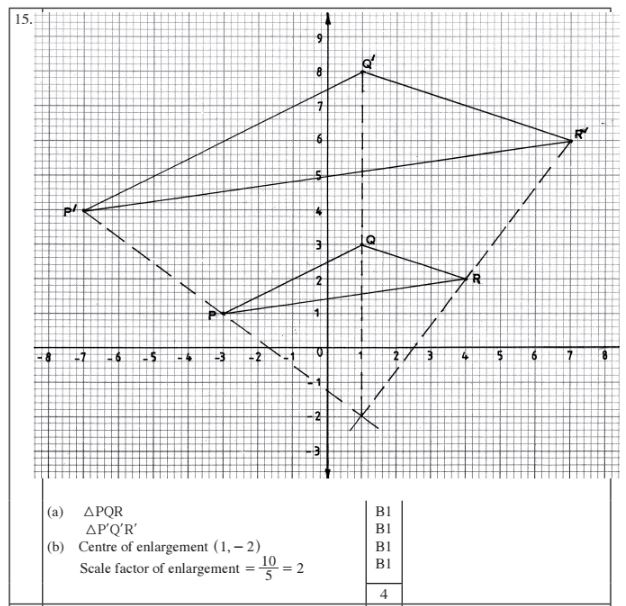
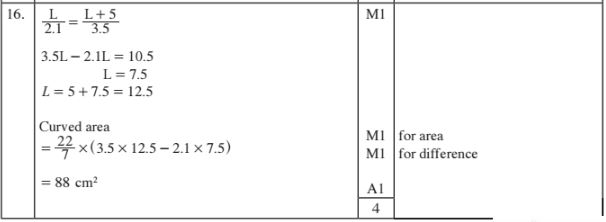
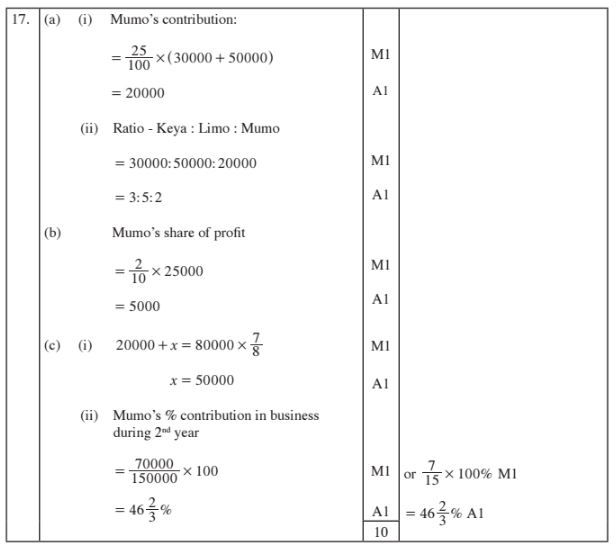
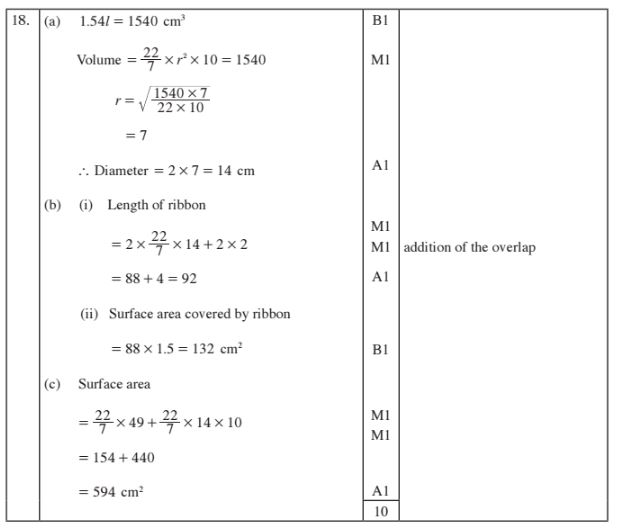
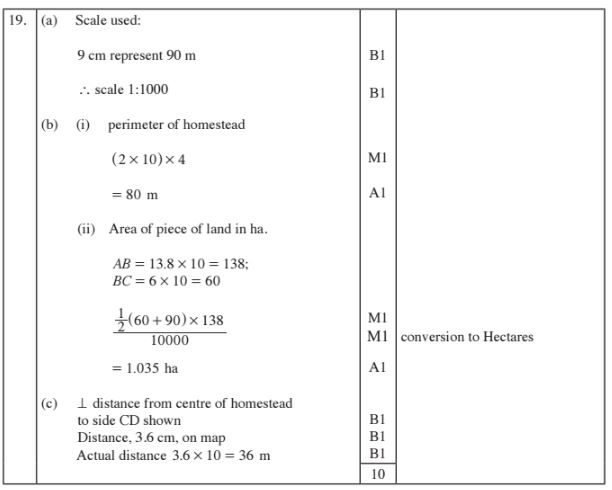
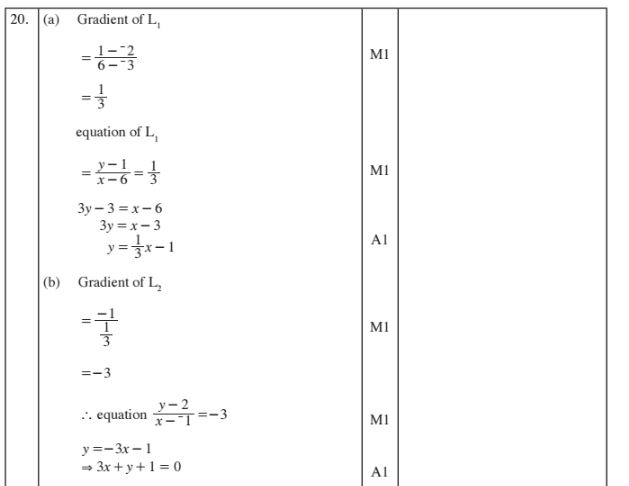
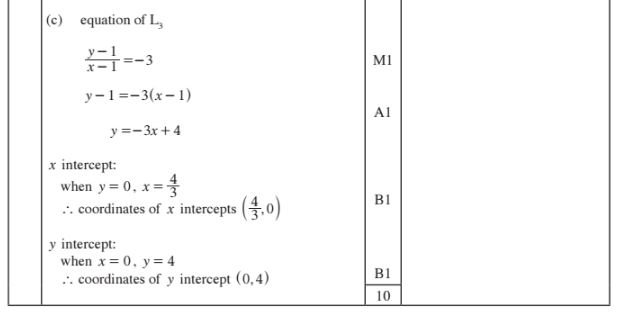
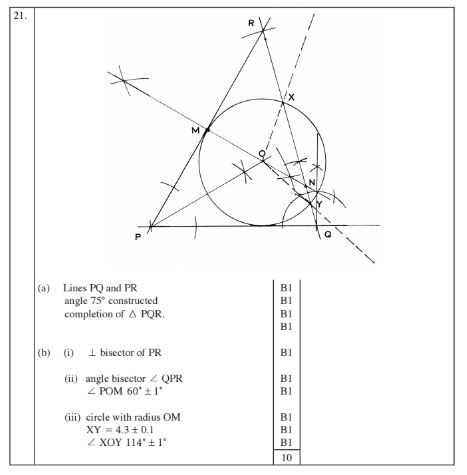
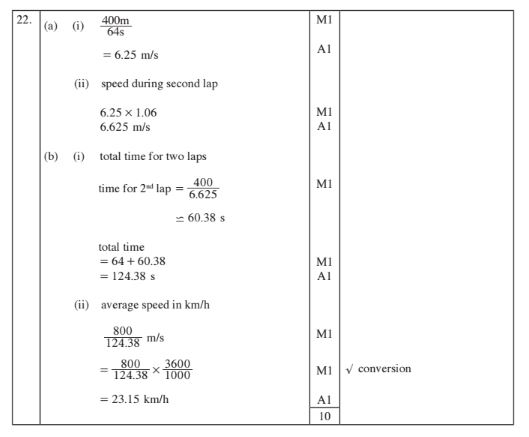
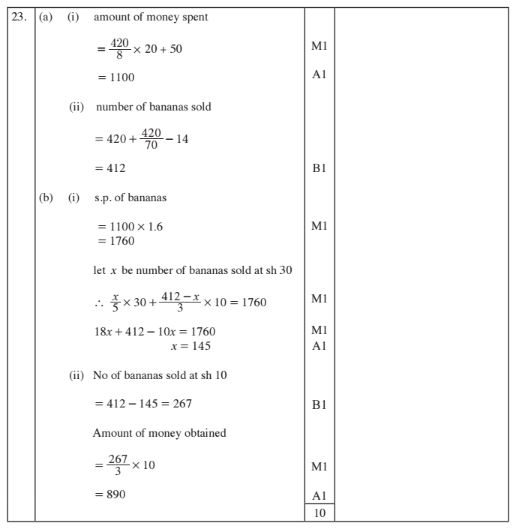
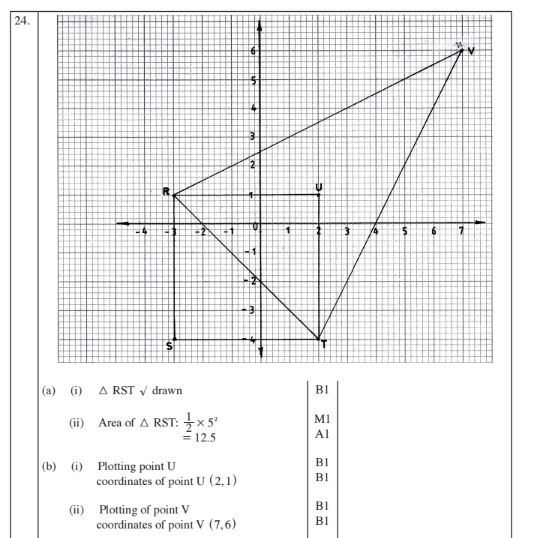
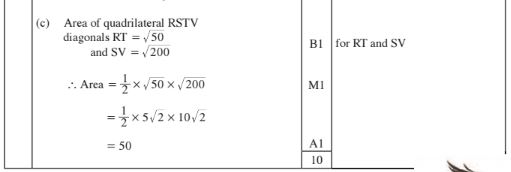
4.3.3 Mathematics Alternative B (122/2)
